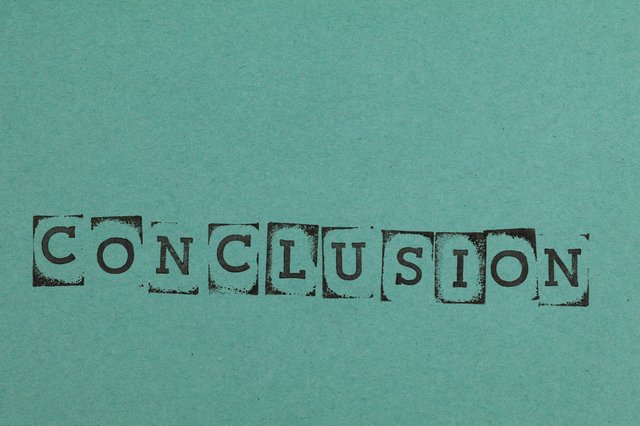What Are the Legal Implications of Undress AI?
The arrival of artificial intelligence (AI) has revolutionized multitudinous industries, from healthcare to finance. However, it has also introduced a new set of ethical and legal challenges. One such challenge is the emergence of "undress AI," a category of AI tools capable of digitally removing clothing from images or videos. This technology, often used to generate sexually explicit deepfakes, has far-reaching implications for privacy, reputation, and criminal activity.
Contents
- What Are the Legal Implications of Undress AI?
- Understanding Undress AI
- Legal Ramifications
- Current Legal Responses
- The Road Ahead
- The Evolving Landscape of Undress AI Regulation
- International Cooperation and Global Standards
- Technological Countermeasures
- Ethical Considerations and Responsible AI Development
- Future Challenges and Opportunities
- Conclusion
- FAQs
- 1. What is Undress AI, and how does it work?
- 2. Is Undress AI Legal?
- 3. What can be done to combat the misuse of Undress AI?
Understanding Undress AI

Undress AI, also known as "deepfake nudity," leverages sophisticated machine learning algorithms to manipulate existing images or videos. By analyzing patterns and textures, these tools can generate highly realistic, yet entirely fabricated, content. While the technology itself is neutral, its misuse can have devastating consequences.
Legal Ramifications
The legal landscape surrounding undress AI is complex and evolving. Laws vary across different jurisdictions, and the rapid pace of technological advancement often outstrips legislative efforts. However, several key legal issues are emerging:
- Privacy Violations: The creation and dissemination of deepfake content without explicit consent constitutes a significant privacy violation. The collection and processing of personal data, including images and videos, must comply with data protection laws like the GDPR (General Data Protection Regulation) in the EU and the CCPA (California Consumer Privacy Act) in the US.
- Cybercrime and Harassment: Undress AI can be used to create and distribute non-consensual explicit images, often with the intent to humiliate or blackmail victims. The technology can be weaponized to generate deepfakes that target individuals for harassment or bullying. Threatening to release deepfake content can be used to extort money or other favors.
- Defamation and Reputation Damage: Deepfake content can be used to falsely accuse individuals of wrongdoing or to damage their reputations. The dissemination of explicit deepfakes can lead to job loss, social ostracism, and other forms of professional harm.
- Intellectual Property Rights: The creation and distribution of deepfakes may infringe on the copyright of the original content or the intellectual property rights of the individuals depicted.
- Child Exploitation: The use of undress AI to generate deepfakes involving children is a serious crime with severe legal penalties.
Current Legal Responses

While legal frameworks are still catching up with the rapid development of AI, some jurisdictions have taken steps to address the misuse of undress AI:
- Legislative Measures: Some countries have enacted specific laws targeting deepfake technology, including provisions for criminalizing the creation and distribution of non-consensual explicit content. Others have strengthened existing laws on defamation, harassment, and privacy to address the unique challenges posed by deepfakes.
- Law Enforcement Efforts: Law enforcement agencies are working to develop tools and techniques to identify, investigate, and prosecute crimes involving deepfake technology. International cooperation is essential to address the transnational nature of deepfake-related crimes.
- Industry Self-Regulation: Technology companies are developing tools to detect and mitigate the spread of deepfakes. Industry standards and guidelines are being established to promote responsible AI development and use.
The Road Ahead
The legal landscape surrounding undress AI is likely to continue evolving as technology advances and new challenges emerge. To effectively address these challenges, a multi-faceted approach is necessary:
- Stronger Legislation: Laws must be updated to explicitly address the misuse of AI for harmful purposes.
- Enhanced Law Enforcement: Law enforcement agencies need adequate resources and training to investigate and prosecute deepfake-related crimes.
- Technological Solutions: The development of advanced detection and mitigation tools is crucial to combat the spread of deepfakes.
- Public Awareness and Education: Raising public awareness about the dangers of deepfakes and promoting digital literacy can help individuals protect themselves.
- International Cooperation: Collaborative efforts between countries are essential to address the global nature of deepfake-related issues.
By understanding the legal implications of undress AI and taking proactive measures, we can mitigate the risks and harness the benefits of this powerful technology.
The Evolving Landscape of Undress AI Regulation

The rapid advancement of AI technologies, particularly those capable of generating deepfakes, has necessitated a swift response from lawmakers and policymakers worldwide. While the legal landscape is still evolving, several key trends and challenges are emerging:
International Cooperation and Global Standards
- Interpol's Role: International organizations like Interpol are playing a crucial role in coordinating law enforcement efforts to combat the misuse of AI, including deepfakes.
- Global Standards: The development of global standards and guidelines for AI ethics and governance is essential to ensure consistent regulation across different jurisdictions.
Technological Countermeasures
- AI-Powered Detection: Advanced AI tools are being developed to detect and identify deepfakes, helping to mitigate their impact.
- Watermarking and Fingerprinting: Techniques like watermarking and fingerprinting can be used to identify the origin and authenticity of digital content.
Ethical Considerations and Responsible AI Development
- AI Ethics Guidelines: Many organizations are developing ethical guidelines for AI development and deployment, emphasizing transparency, accountability, and fairness.
- Industry Self-Regulation: Tech companies are increasingly taking steps to regulate their own AI technologies, including implementing measures to prevent the misuse of deepfake tools.
Future Challenges and Opportunities
- Emergence of New AI Techniques: As AI continues to evolve, new techniques may emerge that further blur the lines between real and fake.
- Balancing Innovation and Regulation: Striking a balance between fostering innovation and implementing effective regulations is a complex challenge.
- International Collaboration: International cooperation is essential to address the global nature of deepfake-related issues.
Conclusion

The legal implications of undress AI are far-reaching and complex. While the technology itself is neutral, its misuse can have devastating consequences for individuals and society as a whole. By understanding the legal landscape, promoting ethical AI development, and collaborating internationally, we can work towards a future where AI is used for good and not for harm.
FAQs
1. What is Undress AI, and how does it work?
Undress AI is a type of artificial intelligence technology that can digitally remove clothing from images or videos. It uses advanced machine learning algorithms to analyze the image or video and generate realistic, but fabricated nude content. This technology often relies on deep learning techniques to manipulate existing images and create highly convincing deepfakes.
2. Is Undress AI Legal?
The legality of Undress AI varies depending on its specific use and the jurisdiction. While the technology itself is neutral, its misuse can lead to serious legal consequences, including:
- Privacy Violations: Creating and sharing deepfakes without consent can violate privacy laws.
- Cybercrime: Using deepfakes for harassment, revenge porn, or extortion is illegal.
- Defamation and Reputation Damage: Deepfakes can be used to falsely accuse individuals or damage their reputations.
- Intellectual Property Infringement: Creating deepfakes using copyrighted material can infringe on intellectual property rights.
3. What can be done to combat the misuse of Undress AI?
Combating the misuse of Undress AI requires a multi-faceted approach:
- Legal Measures: Enacting and enforcing stricter laws to punish the creation and distribution of non-consensual deepfakes.
- Technological Solutions: Developing advanced AI tools to detect and identify deepfakes.
- Public Awareness: Educating the public about the dangers of deepfakes and how to identify them.
- International Cooperation: Collaborating with other countries to address the global nature of deepfake-related issues.
- Ethical AI Development: Promoting ethical guidelines for AI development and ensuring transparency and accountability.